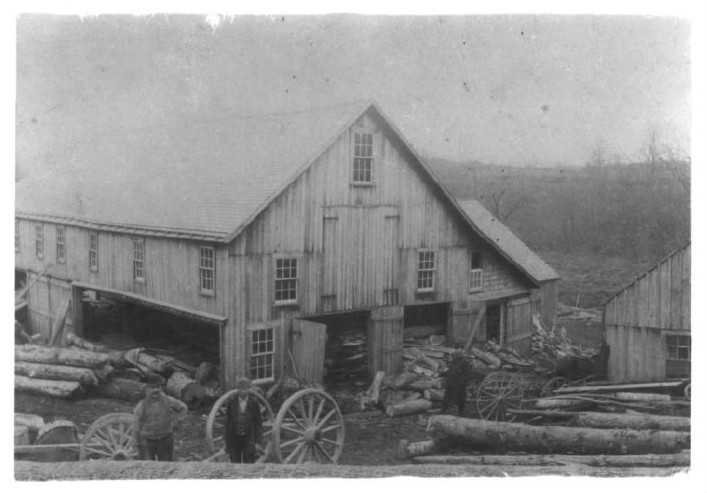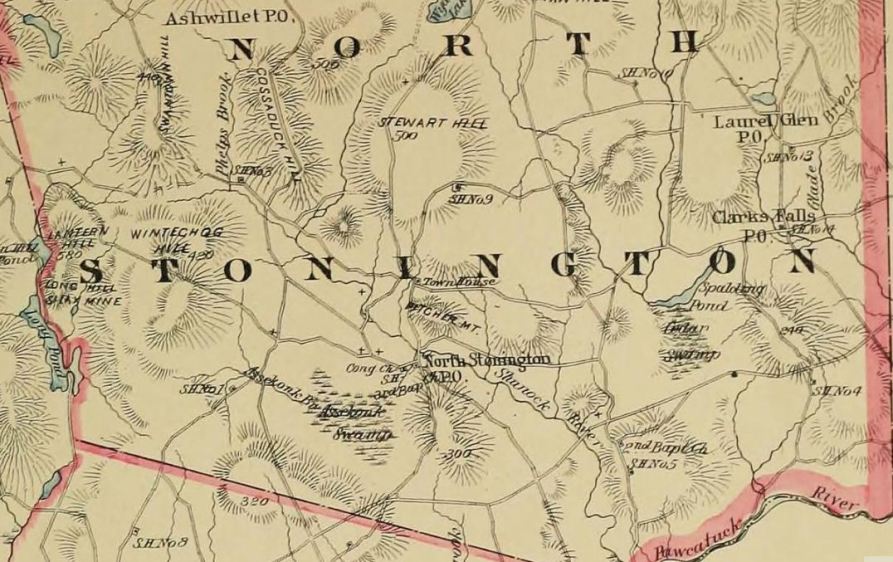European settlement in the area of North Stonington dates back to the mid-1600s. An agricultural village for much of its existence, North Stonington enjoyed a period of prosperity as a mill town. Thanks to abundant waterpower supplied by the Shunock River and the Assekonk Brook, North Stonington supported a variety of mill operations and related local businesses from the late 1600s through early 1900s.
While mill operations in North Stonington spanned four centuries, the early and mid-1800s saw the most intense industrial activity in the area. Woolen mills, that carded wool for household spinning, joined early gristmill and sawmill operations. These mills, in turn, helped foster the growth of John Wheeler’s blacksmith business, Wheeler Hakes’s shoemaking enterprise, and Joseph Frink’s carpenter shop. The town became a prosperous mercantile center that also included dye houses, grocery stores, and dry goods shops. In the mid 1800s, John Bentley even discovered a vein of gold on Swanton Hill, but the costs of extracting it proved too prohibitive to make mining profitable. Mines that produced silex, a powder ground from quartz and other silicates, did, however, enjoy a period of viability.

Saw mill complex at lower dam on Shunock River, ca, 1900, North Stonington Village Historic District – National Register of Historic Places
Town’s Future Tied to Transportation Patterns
As with any prosperous industrial or mercantile center, transportation played a key role in the area’s evolution. During the height of the town’s success, the New London stagecoach brought merchants and consumers through North Stonington to conduct their transactions. At one point, there was even talk of building a large railroad center modeled after New York’s Grand Central Terminal and turning North Stonington into a major transportation hub.
Unfortunately for the local industries, railroad service never made it to North Stonington. Instead, railway lines stayed further south, following the shoreline, and bypassing the little mill town. As a result, industry dwindled in the area as opportunities in larger industrial centers drew businesses away from North Stonington. In 1906, investors established the Norwich-Westerly trolley line through North Stonington in hopes of attracting rail traffic traveling between Boston and New York, but the line did little to attract new business and shut down in 1921.
After the decline of industry in North Stonington, the town reverted to its agricultural roots. Dairying became the dominant industry in town for much of the early 20th century. As populations moved out of the cities and into the suburbs later in the century, North Stonington gradually took on the residential character that defines it today.








